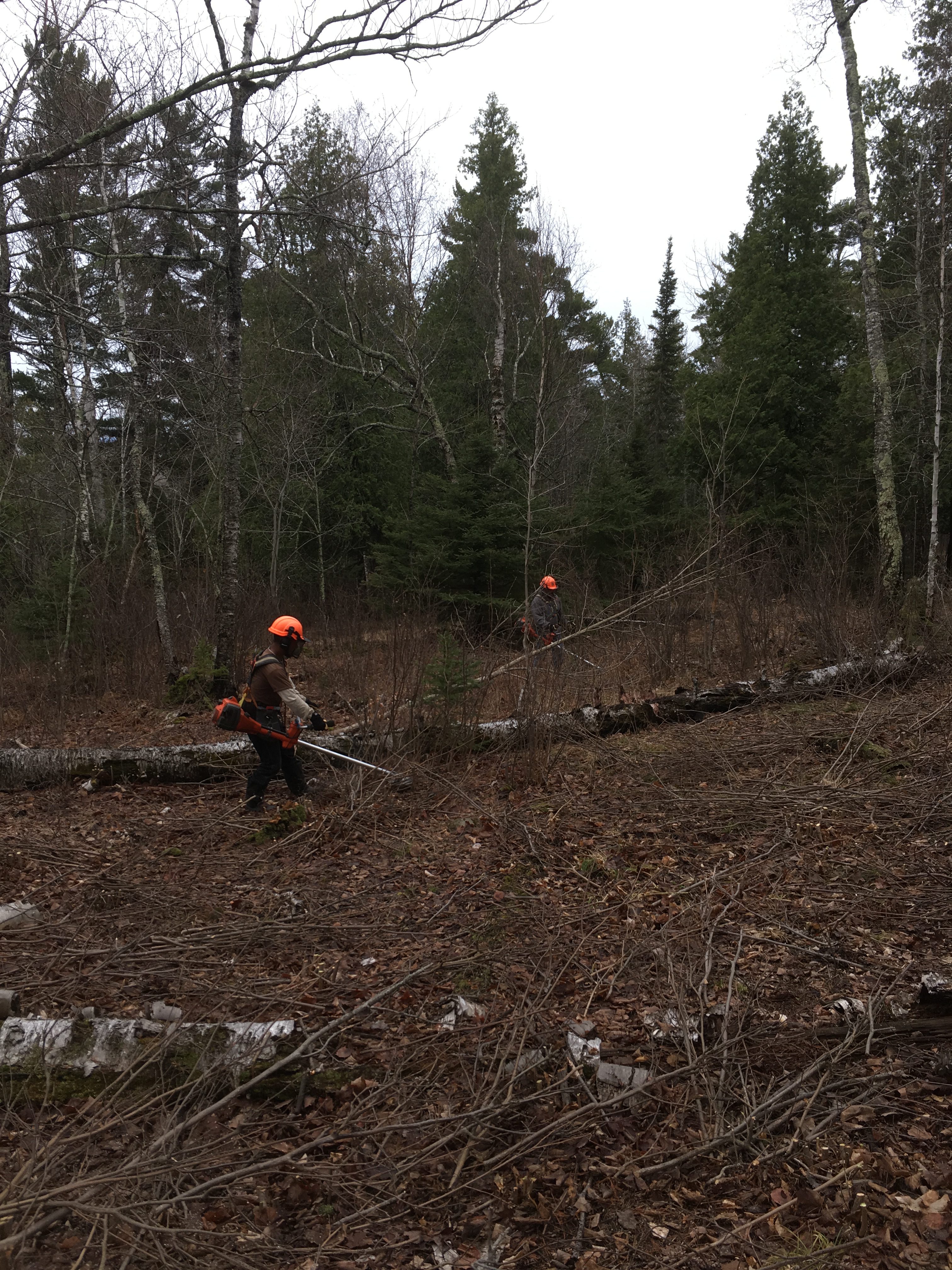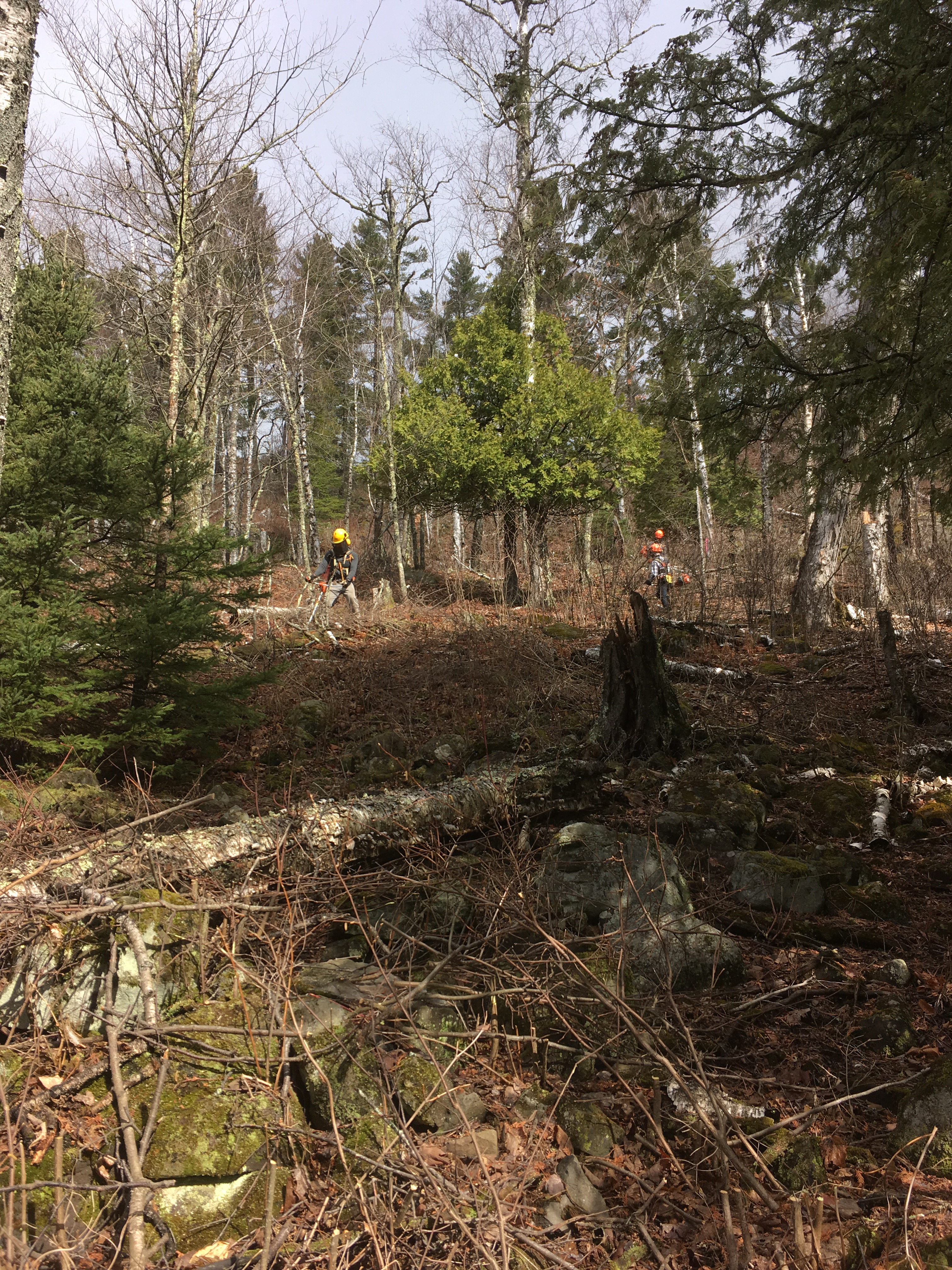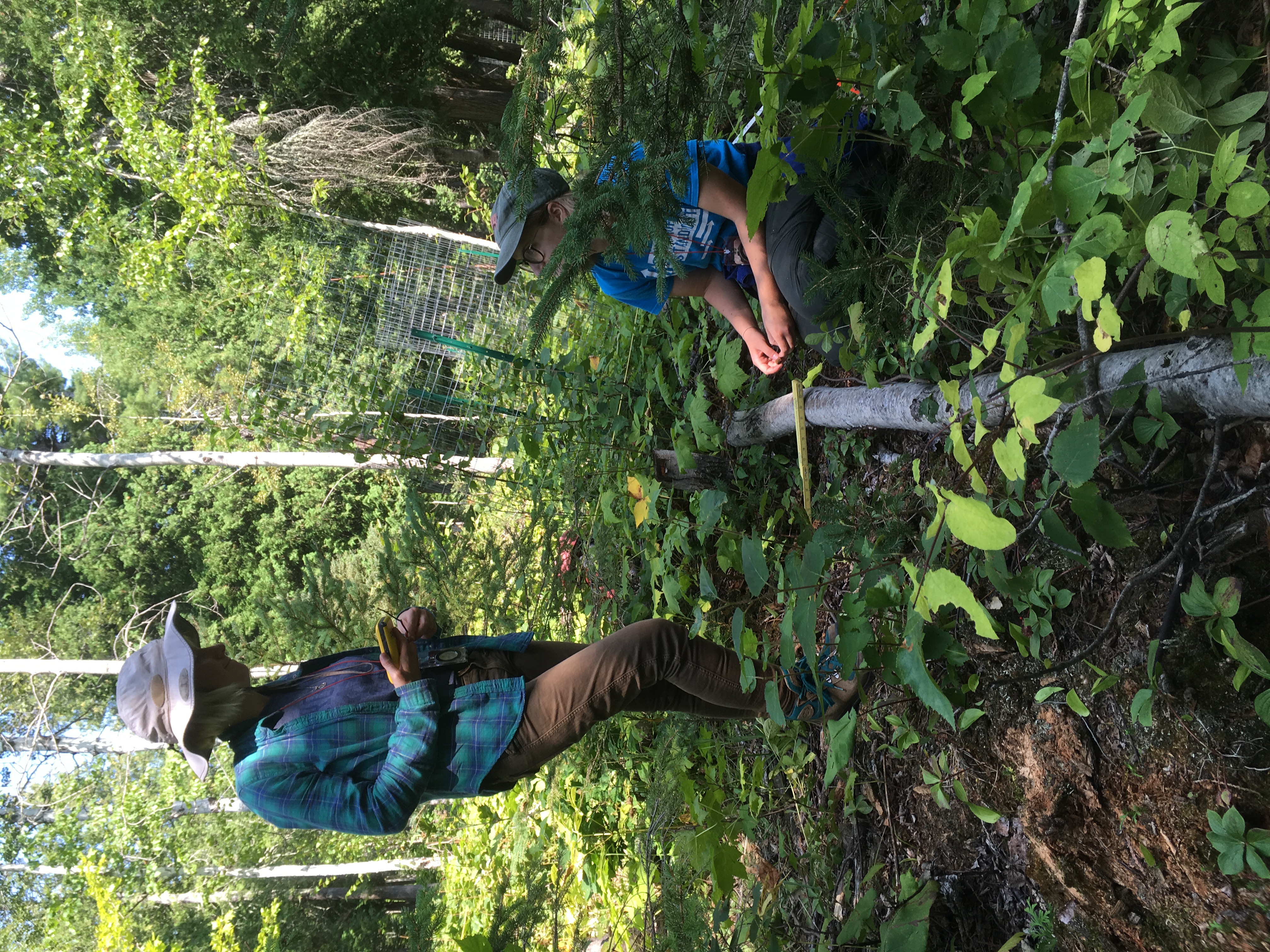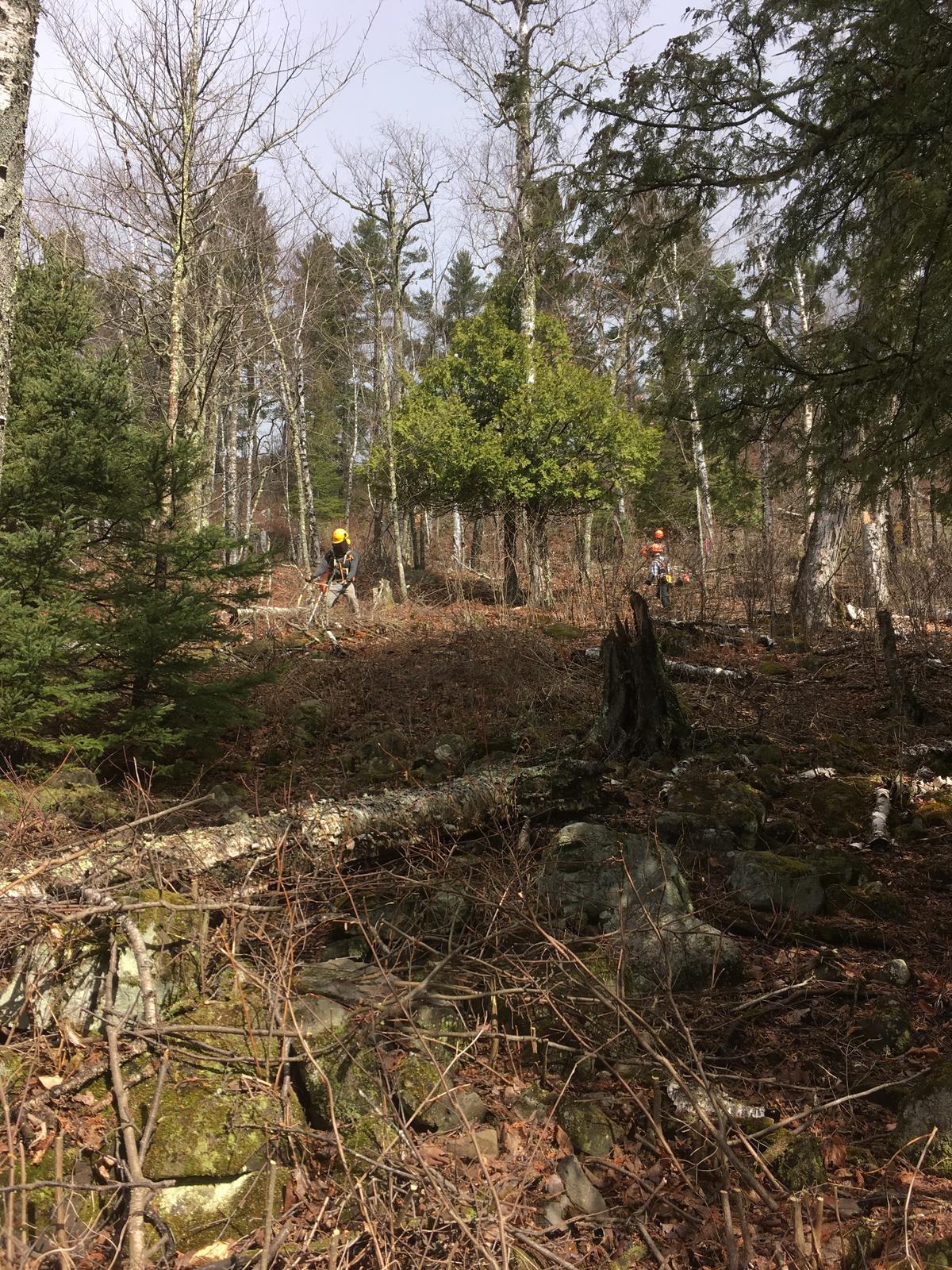Overview
The treatments applied to this site are part of a larger “Conifer Strongholds” project, funded in part by the Wildlife Conservation Society’s Climate Adaptation Fund with a grant originating from the Doris Duke Charitable Foundation. Conifer Strongholds targets places in the Arrowhead region of northern Minnesota with local geophysical characteristics and/or regional climatic trends that may sustain northern conifers even with a warming global climate and associated threats. The project aims to increase the resilience of forested systems by enhancing species and structural diversity (with emphasis on restoring native conifers species), promoting landscape connectivity, and enhancing genetic diversity. The project promotes tree species that are sensitive to warmer climates on sites that are buffered from climate change impacts by local conditions, such as moist soils, riparian corridors and/or northern or eastern slope aspects. Restoring and retaining these species and forest types will have important implications for wildlife habitat, future management options, and other ecosystem services. Relative to other sites in northern Minnesota, this site has high landscape diversity but is situated in a climatic region that is warming more quickly than northeastern Minnesota as a whole. See the Forest Adaptation Menu (Northern Institute of Applied Climate Science) for a complete menu of potential forest adaptation strategies and approaches (https://forestadaptation.org/menu).
Silviculture Objective(s)
Maintain and enhance species and structural diversity by emphasizing the retention of mature conifers as biological legacies (e.g., white pine, white spruce, and northern white cedar) and interplanting of northern conifer seedlings. Promote browse-susceptible hardwood species that are present on the site (red oak and yellow birch) but unable to recruit beyond the seedling stage due to heavy browse pressure. A secondary objective is to enhance genetic diversity by planting seedlings sourced from a broader geographic range.
Pre-treatment stand description and condition
Pre-treatment species composition:
In decreasing order of abundance, the stand contains aspen, white cedar, white spruce, red maple, sugar maple, balsam fir, paper birch, white pine, yellow birch, black ash, and red oak.
Pre-treatment growth and stocking:
While a stocking table is not available, the stand is understocked with only ~60 percent canopy closure. Large canopy gaps have filled with dense brush.
Pre-treatment forest health issues:
Extremely heavy deer browse has nearly excluded recruitment beyond the seedling stage (especially for white pine and white cedar) over the last 50-75 years resulting in missing size classes and dominance by shrub species. White-pine blister rust is also present in the stand, though not severe. Balsam fir, and some white spruce, have suffered from outbreaks of spruce budworm, though presently it is also not severe.
Landowner objectives/situation:
This site was selected as a possible stronghold for conifers in the projected climate due to diverse geophysical features (i.e. highly variable soils, slope, aspect, etc.). Historically the stand was likely a white pine-red pine mixed conifer forest, but high herbivory has nearly eliminated pine recruitment and dense brush fills in the gaps created by tree mortality. The goal is to maintain this site as a mixed conifer stand to retain this ecosystem in a region that climate models suggest will have high susceptibility of transitioning from a northern conifer forest type to a different forest type or non-forest.
Silviculture Prescription
Non-harvest, manual site prep: remove all brush in the stand and aspen up to three inches diameter. Retain natural white pine, white spruce, northern red oak, and yellow birch of all size classes.
Artificial regeneration: manually scarify (“scalp”) each planting location to further reduce competition, and plant the site with containerized white pine, white spruce, and yellow birch, and bare root tamarack, white cedar seedlings, and red oak.
Protect white pine from browse using welded wire fences. Protect cedar using browse protection cones and mesh tubes. Protect red oak and yellow birch seedlings with corrugated plastic tubes.
What actually happened during the treatment
The site preparation was accomplished using clearing saws and removed 80-90 percent of brush stems. Only about 50 percent of three-inch diameter aspen was cut, but a higher percentage of smaller stems was removed. 2,950 trees were planted (~100 trees per acre): 2,000 white spruce, 150 white pine, 250 tamarack, 50 white cedar, 400 northern red oak, and 100 yellow birch, though the scarification was generally unsatisfactory. For browse protection, 250 wire fences were installed over planted and natural white pine and all 50 cedar received browse protection cones. All yellow birch and 100 red oak were also protected with plastic tubes. Pine seedlings without shelters were budcapped each fall since the planting.

Figure 1: Manual site prep using brush saws to remove brush.

Figure 2: Another view of the stand and site prep operation.
Post-treatment assessment
Two growing seasons following planting, a regen survey estimated 100 white pine, 100 white spruce, 75 white cedar, and 188 balsam fir seedlings per acre. No surviving tamarack were tallied and the reason for this is unknown. The survey is designed to track survival and growth over time for specific seedlings, not to estimate seedling density, but it does provide a rough idea of survival.

Figure 3: Regen surveys during the growing season. Browse protection fences in the background.
Plans for future treatments
Every year the site will be monitored, and follow-up treatments applied as necessary. Follow-up treatments may include browse protection, competition control (release and/or cleaning), pathological pruning for white pine blister rust, and fill planting.
Costs and economic considerations
The cost of site prep came to $3380. Tree seedlings cost $843 and protection materials cost $5830. Planting and installation of browse protection materials came to $4063. Most of this expense was for the installation of welded wire fences for white pine. $754 was spent for browse protection and shelter maintenance in fall of 2017, and $870 in fall of 2018. Total expenses in this stand as of December 2018, is $15740.
Other notes
Mechanical site prep with mulching equipment was preferred for this stand to more completely remove brush and larger stems, as well as much more thorough soil scarification to encourage natural regen, but the operator found the soil too steep, wet, and rocky for this equipment.
Climate Adaptation Considerations
This case study is just one site of a much larger project that is entirely focused on adaptation management for climate change. The site was selected specifically for potential to sustain northern, climate sensitive conifers in a changing climate due to high landscape diversity. The treatments were designed to promote a pocket of climate-resilient mixed conifer forest in a region that will be largely unable to support this historically dominant forest type under warmer conditions. Likewise, the treatments were intended to improve ecosystem resilience to stressors (including climate-related) through increased complexity and diversity.
